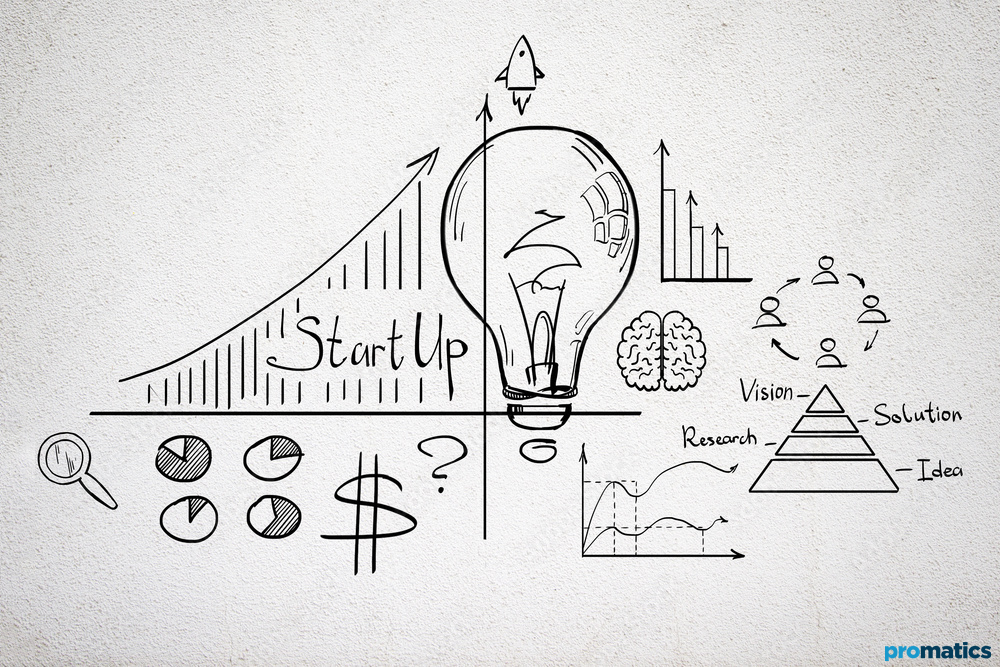How to Conduct a Perfect Design Sprint?
Are you one of those people who are working in a bulky organization with managerial layers and hierarchies and yet you find yourself individually as well as collectively as part of the organization that you are in some sort of a decision-desert? You are confused about what to go ahead with and what to leave behind, it could literally cost you millions of dollars.
If you are not one of these people but still face the same dilemma, you have an idea but you have no idea how it will end up, once again you are no different from the mate we talked about above.
Both of you face the same problem, you do not want to and can not rely on your intuition and your own ideas about the product you are working on. It is the users who make the product successful. Hence, their contribution towards products is of utmost importance. You need a quick, agile and responsive method that works like an ATM machine, you put your card in and your money gets out in a matter of seconds.
What should you do?
Lucky for you, Google Ventures came up with this marvelous idea to test their potential startups for investment and did away with all the risk of losing money and wasting resources. The process is called ‘Design Sprint’ and you must learn it if you are involved at any stage of the product development process.
What exactly is Design Sprint?
You can call a design sprint a fast-paced method of evaluation of ideas and implementations of a product to validate it, learn from it, or simply reject it, and all this without the precious time and valuable resources.
When we say ‘fast-paced’, how fast are we exactly referring to? Well, we are talking about thinking, designing, implementing, and testing an idea in a total of 5 days, just one working week. In the end, you will be holding a decision of what to go ahead with and what to leave behind.
It seems surreal when you think about all the lengthy discussions and meetings that departments have for months, highly qualified professionals all trying to win each other and they are unable to decide. It is only natural to question the credibility of this approach but stick along till we unravel the little bits of the process ahead.
How do you execute a design sprint?
Now that you know what design sprints actually mean and how much more efficient can your decision-making process be using design sprints, let me take you through the entire process of completing a design sprint and successfully concluding with a well-supported decision.
Till now, you must have understood that a design sprint takes 5 days or 1 business week to complete. Each day has been dedicated to certain nature of tasks that the team will be performing and at the end of 5 days, you will have not a probabilistic but an absolute idea about what to do and what not to do.
Building your team
The sprint aims at developing a product in 4 days that will be trial tested by your existing or potential customers on the 5th day. You would want to develop a practical product that your organization can provide, at a price that your customers can afford and with features that solve an existing problem or increase the customer’s convenience.
For instance, you want to develop a game and launch it on the App Store. You bring 5 graphic designers into the room and execute your design sprint. On day 5, you will have perfectly designed graphics for your game that your customers would want to see in the future. On day 6, you gave those graphics to the developing team and it turned out that such a game would need the most high-end computing machines. Later that day, the marketing team told you that audience for such a game is very limited and thus, you would not be able to sell it for long.
What was the flaw in this situation? Did the design sprint fail or is it just not suitable for your type of work?
None of the above. In pursuit of developing a game with the best-in-class graphics, you forgot to consider that the game should be playable on all possible devices and that you need to sell it to make use of the idea. Basic decision-making, right?
Actually, it might not be as simple as you think. You see, in any organization, small or large, a number of departments are collaborating with each other on daily basis and successfully execute a task. Every one of these departments looks into their relevant aspect of the product. Resultantly, you get a product that is feasible in the market and interesting for your customers as well.
Involve all representatives from all departments
It is important that you take representatives from all departments in your organization. These can be the heads of these departments, from lower hierarchies, or even people irrespective of their hierarchies; it does not matter.
What does matter is that each one of them should bring their part of the plan and their sets of unique ideas to the table so that when you complete the exercise, you have a product or an idea that is practical to sell and just needs to be fine-tuned to develop it into an actual marketable product.
The Actual Process
The 5-day design sprint exercise aims to magically transform your decision-making process completes in 5 different stages:
i.) Understand the problem
ii.) Generate ideas to solve it
iii.) Decide on the ideas
iv.) Build a prototype
v.) Customer trials
Step 1: Understanding the problem
Welcome to the design sprint! Gather all the people that you have selected in one room and tell them why they are here, why do they need to develop a product.
This perhaps is the most vital step of all. Your team needs to be aware of the actual situation. Half of the problem is solved itself when you have a proper in-depth understanding of the issue, at what point it occurs, and what inconvenience it causes. It is vital to the overall success of the project that each member of the team is on the same page from day 1. The goal for this step is to create a shared knowledge about the problem that needs to be worked on.
It is advisable to bring every member of the team together and let the ideas flow in a way that all of the team’s knowledge about the problem is somewhat unpacked. This session can also use the help of “Lightning Talks” which is the process where knowledge experts use 10-15 minutes to share their specific knowledge about the problem in question. Members of the senior management should also deliver precise presentations about the problem as part of the lightning talks.
As a result of the understand session, the team should be on the same page about the problem itself, the overall process lying ahead, and the goals that the team has to work to achieve.
Step 2: Generate ideas to solve it
Assuming that everyone is on the same page about the problem in question and the goals that are to be achieved, it is best to split the team up and get them to start coming up with the solutions.
Sketching is an integral part of Day 2 as it is a quick and efficient method to rapidly jot down ideas and make changes to them if necessary. Moreover, every member of the team can contribute their ideas by sketching as you don’t know any technical wireframing knowledge to do so. It is at this point that the team might want to break up a large problem into small-sized manageable chunks that the individual members can efficiently work on.
Before you go into the third day of the sprint, it is an advisable step to reduce the total number of ideas down to a few that you think the team can work on going forward. Having a clear vision of the ideas and the results you want to gain from those ideas is an integral part of step 2.
Step 3: Decide on the ideas
As you might expect, the third day or the third step in the process is all about making a decision, but it is not quite as straightforward as that. Firstly, the team has to decide which idea or ideas they have to work on going forward, and which ideas they need to drop because of their lack of feasibility.
The decision should be taken keeping in view a number of factors that are to be considered for the short and long-term success of the project. It is best to review each idea individually and look at the conflicts it generates vis a vis factor-like budget, users, technology capacity, and business drivers, etc.
At the end of the decision day, the team has a final idea or a list of best ideas that they want to take forward into prototyping.
Step 4: Build a prototype
On Prototype day, the objective is pretty straightforward. You need to create a prototype in a single day that your users can test on the final day. As this is a pretty big task due to time constraints, it is important to leverage the whole team on this day and take advantage of everyone’s expertise in order to get the best results.
The first step should be to build a storyboard of some sort that would reflect the user experience in a simplistic way. It is important that you use tools that you are already familiar with, and do not attempt to learn something new on this day. All the members of the team should be involved in some way or the other, in order to alleviate some of the burdens from the engineers creating the prototype.
Step 5: Customer Trials
As the name indicates, this is the day of the trials where your idea will be validated. The key to the validation of your idea is to bring in a group of customers or end-users to test the prototype that you created the day prior. It is critical to the success of the project that the entire team gets to observe the whole interaction of the customers with their prototype.
There are a number of ways this particular step can be conducted. The team can make use of cognitive walkthroughs or brief usability tests to gauge the overall response of the users towards their prototype. It is also possible to bring in experts and management stakeholders to provide a unique perspective on the trials.
It is crucial that everyone on the team make notes and record whatever they feel that they have judged from the trials. At the end of day 5, the team should get together and review these notes to decide what aspects of the project need improvements or changes.
Conclusion
And that concludes how you will complete your design sprint. The design sprint approach is especially relevant when you are trying to do something new but do not have enough data about whether or how to do it.
This idea of design sprints has risen from startups and helps you to decide in the most agile manner. Best of luck!
Still have your concerns?
Your concerns are legit, and we know how to deal with them. Hook us up for a discussion, no strings attached, and we will show how we can add value to your operations!


